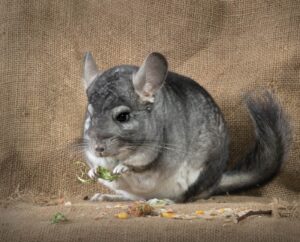Table of Contents
ToggleIntroduction
Potbellied pigs have become increasingly popular as unique and endearing pets. Their charming personalities, distinctive appearance, and intelligence make them appealing companions for those willing to commit to their care. However, understanding the lifespan of potbellied pigs is essential for prospective owners, as it influences the long-term responsibilities and commitments associated with these animals. This comprehensive article delves into the intriguing question of “How long do potbellied pigs live?
How Long Do Potbellied Pigs Live: Lifespan Of Potbellied Pigs
Potbellied pigs, often affectionately called “mini pigs,” have an average lifespan of 12 to 20 years. This longevity sets them apart from other common pets, such as dogs and cats, which typically have shorter lifespans. However, it is essential to note that the lifespan of a potbellied pig can vary significantly based on several critical factors.
One of the foremost factors influencing a potbellied pig’s lifespan is genetics. The pig’s lineage and the breeder’s or previous owners’ breeding practices can substantially impact its health and longevity. Reputable breeders often prioritize the health and well-being of their breeding pigs, which can result in healthier offspring with a more significant potential for a longer life.
How Long Do Potbellied Pigs Live: Factors Influencing Lifespan
Genetic Factors: Genetic predisposition significantly affects a potbellied pig’s lifespan. Pigs from well-established and reputable bloodlines tend to have fewer hereditary health issues and a higher likelihood of living longer, healthier lives.
Diet and Nutrition: Nutrition is a pig’s health and longevity cornerstone. Properly balanced diets that meet their nutritional needs are crucial. Overfeeding, underfeeding, or providing an imbalanced diet can lead to various health issues that shorten a pig’s life. Monitoring a pig’s diet, providing high-quality feed, and avoiding excessive treats is critical for responsible pig nutrition.
Exercise and Physical Activity: Regular exercise and opportunities for physical activity are vital for a pig’s overall well-being. Exercise helps pigs maintain a healthy weight, prevents obesity-related health problems, and contributes to a longer life. Adequate space to roam, explore, and engage in natural pig behaviors is essential for their physical health.
Veterinary Care: Routine veterinary care is another critical component of a pig’s longevity. Regular check-ups, vaccinations, and preventive measures help ensure a pig’s health and can lead to early detection and treatment of potential health issues. Spaying or neutering is also a crucial aspect of responsible pig ownership, as it can prevent specific health problems and increase a pig’s lifespan.
How Long Do Potbellied Pigs Live: Common Health Issues
While potbellied pigs are generally considered hardy animals, they can still experience various health problems that may affect their lifespan. Some of the common health issues in potbellied pigs include:
Obesity: Obesity is a prevalent issue in pet pigs. Overfeeding and a lack of exercise can lead to obesity, associated with various health problems, including joint issues and heart disease. Maintaining a healthy weight is crucial for a pig’s overall health and longevity.
Dental Problems: Dental issues, such as overgrown or misaligned teeth, can affect a pig’s ability to eat correctly. Regular dental check-ups and providing appropriate objects for chewing are essential for preventing dental problems.
Arthritis: Arthritis can develop in older pigs or those with genetic predispositions. It can lead to pain and mobility issues, affecting a pig’s quality of life. Management strategies, including joint supplements and pain medication, can help alleviate these symptoms.
Skin Conditions: Pigs are prone to skin conditions, including fungal and bacterial infections. Regular grooming and maintaining clean living conditions can help prevent skin issues.
Respiratory Problems: Pigs can be susceptible to respiratory issues, especially in environments with poor air quality or irritant exposure. Proper ventilation and a clean living space are crucial for preventing respiratory problems.
Internal Parasites: Internal parasites like worms can affect a pig’s health. Regular deworming and fecal exams are necessary to control parasite infestations.
Reproductive Issues: Unspayed females can develop uterine problems that can be life-threatening. Spaying or neutering at the appropriate age can prevent these issues.
Early detection and treatment of health issues are critical for prolonging a pig’s life. Regular veterinary check-ups, a well-balanced diet, and appropriate living conditions can help prevent many of these health problems.
How Long Do Potbellied Pigs Live: Quality Of Life In Captivity
Living Environment: The living environment significantly influences a pig’s quality of life and, consequently, its longevity. Providing a pig with a comfortable and safe shelter is essential, especially in regions with extreme weather conditions. Proper bedding, protection from heat, cold, and rain, and shelter from potential predators are crucial components of a pig’s living environment.
Socialization: Potbellied pigs are inherently social animals that thrive on interaction with humans and, often, with other pigs. A lack of socialization and mental stimulation can lead to stress and a reduced quality of life. Owners should spend time bonding with their pigs, engaging them in stimulating activities and providing opportunities for social interaction.
Mental Stimulation: Pigs are intelligent animals that benefit from mental stimulation and enrichment activities. Providing puzzles, toys, and tasks that engage their minds can contribute to their mental well-being and overall quality of life.
How Long Do Potbellied Pigs Live: Importance Of Responsible Ownership
Responsible ownership is paramount in ensuring the well-being and longevity of potbellied pigs. Prospective pig owners must be well-informed about the unique needs of these animals and prepared for the long-term commitment they represent. Pig ownership should never be impulsive; it requires careful consideration of the responsibilities involved.
Education is a critical component of responsible pig ownership. Prospective owners should educate themselves about pig care, nutrition, health, and behavior before bringing a pig into their lives. Awareness of zoning restrictions or other rules affecting pig ownership is also necessary.
Pig owners must also have the financial resources to provide for their needs. This includes daily care, veterinary expenses, unexpected medical bills, and the cost of providing a safe and comfortable living environment.
Responsible owners should also consider the ethical aspects of pig ownership. Pigs are highly social and intelligent animals and form strong bonds with their caregivers. Owners should be prepared to provide the companionship and attention that pigs need to thrive emotionally.
How Long Do Potbellied Pigs Live: Case Studies
To underscore the potential for long and healthy lives among potbellied pigs, real-life case studies can provide valuable insights. These examples demonstrate how factors such as diet, veterinary care, living conditions, and socialization can contribute to remarkable longevity in these animals.
One case study might involve a rescued pig that was initially in poor health but experienced a significant improvement in its quality of life and lifespan after receiving proper care, nutrition, and attention. Another case study could focus on a pig from a reputable breeder with a robust genetic lineage and how it enjoyed a healthy and lengthy life.
These case studies can serve as inspiring examples for prospective pig owners, highlighting the positive impact of responsible ownership and demonstrating that potbellied pigs can thrive and live fulfilling lives with the proper care.
Conclusion
Understanding the factors that influence the lifespan of potbellied pigs is essential for anyone considering them as pets. These remarkable animals can live for 12 to 20 years or more with the proper care, nutrition, and living conditions. Genetics, diet, exercise, and veterinary care significantly determine a pig’s longevity.
By providing adequate care, attention, and a loving environment, prospective pig owners can ensure their potbellied pigs enjoy a fulfilling and healthy life for many years. Potbellied pigs are not just pets; they are long-term companions that can bring joy and companionship to those dedicated to their well-being.







